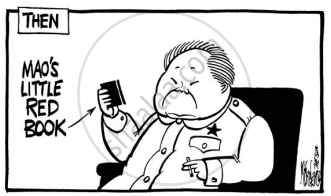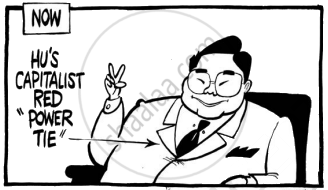Advertisements
Advertisements
प्रश्न
Explain any two major policy decisions made by the Chinese government to open and develop its economy.
उत्तर
The Chinese government made several significant policy choices to open and expand its economy, including:
- The Chinese leadership took major policy decisions in the 1970s. China ended its political and economic isolation with the establishment of relations with the United States in 1972. In 1973, Premier Zhou Enlai proposed the 'four modernisations' in the field of agriculture, industry, science, technology, and military. By 1978, then-leader Deng Xiaoping announced the 'open door' policy and economic reforms in China. The policy was to generate higher productivity through investments in capital and technology from abroad.
- The privatisation of agriculture in 1982 was followed by the privatisation of industry in 1998. Trade barriers were eliminated only in Special Economic Zones (SEZs) where foreign investors could set up enterprises. In China, the state played and continues to play a central role in setting up a market economy.
APPEARS IN
संबंधित प्रश्न
Trace the evolution process of the European Union.
Study the cartoon given below carefully and answer the following questions:

i. The given cartoon is related to which country?
ii. Which two symbols in this cartoon helped in identifying the country?
iii. What message does this cartoon convey to the world?
Assess the role of ASEAN as an economic association.
Analyse any three factors responsible for the European Union to be a highly influential regional organisation.
What is meant by ASEAN way?
What were the objectives behind the formation of the ASEAN in 1967?
What are the major differences between the SAARC and the European Union as alternative centres of power?
Which of the following nations adopted an ‘open door’ policy?
Assertion: In April 1949, North Atlantic Treaty Organisation was an association of 12 states which declared that an armed attack on any one of them in Europe or North America would be regarded as an attack on all of them.
Reason: Each state would be obliged to help the other.
When was the People’s Republic of China established?
Who proposed the ‘four modernizations’ in China?
When did China becomes a member of the WTO?
Who among the following adopted an ‘open door’ policy?
Which of the following is the only country that suffered the destruction caused by nuclear bombs?
Who among the following adopted the ‘Open door’ policy?
Which among the following was the first non-communist country to establish an embassy in China?
Arrange the following in chronological order:
- China's accession to WTO
- Establishment of the EEC
- Establishment of the EU
- Birth of ARF
Which of the following was not an impact of New Economic Policy of China?
The present Chinese economy differs from its command economy. Which of the following point is true regarding this.
In which year, China ended its political and economic isolation with USA?
Which of the following was not an impact of New Economic Policy of China?
Why did the people of China not receive the benefits of the reforms when its economy had improved dramatically? Explain giving any two reasons.
Evaluate any three steps taken by the Chinese leadership for the growth of Chinese economy.
Study the given cartoon carefully and answer the questions that follow:
 |
 |
- To which country are these two cartoons related?
- Japan
- Vietnam
- South Korea
- China
- Red Book is related to which ideology?
- Capitalism
- Communism
- Humanism
- Terrorism
- What does the 'Red Power Tie' depict?
- Negation of communism
- Acceptance of Capitalism
- Coordination of communism with Capitalism
- Negation of Capitalism
- What is the difference between 'then' and 'now' as per the cartoon?
- 'Rigidity' has increased now in the ideology of 'then'.
- Rigidity has decreased 'now' in the ideology of 'then'.
- The leader under 'then' and the leader under 'now' belong to different political parties.
- The leader under 'then' and the leader under 'now' belong to different organisations.
Explain any three steps taken by China to grow its economy.
